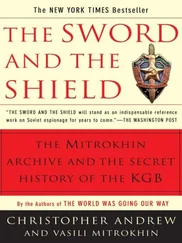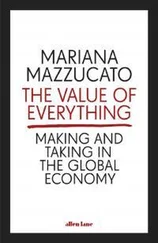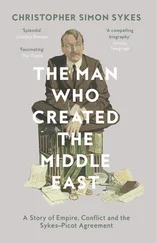Once you know the amount of value creation, you can compute the annual compound growth rate of your EMVA. Key to this computation is knowing the weighted average age of company equity at cost, which will almost always be younger than a company's chronological age. That is because most companies reinvest some or all their free cash flows back into the business, rather than distribute that free cash flow to shareholders. The result is that the cost basis of a company's equity rises each year as company management reinvests shareholder cash flows into the business. In the case of the companies I have helped lead, we have also raised new shareholder capital annually, which has served to further reduce the effective age of our business. Financially speaking, the higher the annual compound EMVA growth you can realize, the better you are.
EMVA growth is a far better long-term business evaluation metric than compound earnings growth. Between 2015 and 2019, Walmart, amongst the most valuable publicly traded companies and the single largest retailer and corporate employer in the US, threw off close to $30 billion annually in free cash flow from operations. The company paid out only about 20% of that in shareholder dividends, which means that about 80% of annual shareholder cash flows were available for reinvestment into the company each year. Assuming Walmart reinvested the money profitably into its business, how could earnings per share fail to go up? Really, the company could have lit on fire half of its annual retained cash flow, reinvested the other half into earnings-producing investments, and net income per share would be expected to rise.
The reinvestment of cash flows is the main reason that broad stock market indices rise over the long term. They have to. Yet, for shareholders, the paramount issue should be whether companies are able to retain and reinvest their free cash flows without losing any of the value of that reinvested cash. And while not losing any wealth would be great, creating added EMVA would be even better.
Regrettably, too few Americans understand the power and dynamics of business wealth creation. Many of us believe that wealth is beyond our reach and that our market economy is somehow rigged to favor an elite few. I have never believed this. At its heart, America aspires to be a meritocracy. If you are fortunate enough to live in America, your potential should be limited only by your imagination, dedication, and discipline.
My experience is that good ideas, solid business models, and qualified leadership teams are scarcer than the investor capital needed to support and sponsor them. In my career, this has become increasingly true. If you are considering an idea having the potential for wealth creation, America is as good a place as I can think of to execute it. For one, the US, with approximately 4% of the world's population, has more small- and middle-market companies than any other country in the world. According to the US Small Business Administration and the US Census Bureau, as of 2018, there were approximately 26 million small businesses having no paid employees other than the owner, and more than 6 million small businesses with fewer than 500 paid employees. Those small businesses collectively employed nearly half of all working Americans.
The growth of capital availability to fund business ideas is equally impressive. When I graduated from college in 1979, there were scarcely any private equity investment companies. Forty years on, there are no fewer than 10,000 private equity and venture capital firms investing in every kind of company imaginable. Add them all together and you have an abundance of capital unheard of in American history. With a highly open economy and a strong legal framework, both of which are essential to encourage business formation, the US has a veritable conga line of lenders and equity investors in search of solid ideas having wealth creation potential. I learned this personally—access to investment capital enabled me to co-found companies in 2003 and 2011 that would both go on to be listed on the New York Stock Exchange.
Among the greatest gifts my parents gave me were an education and an example. In 1980, with nothing but a college degree in history and French, $500, and a box of hundreds of rejection letters from prospective employers, I loaded up my 1970 Volkswagen in New York and drove to Atlanta, Georgia. I landed a job selling clothing, and then started attending night school to learn about business. A few months later, I was hired by a regional bank—my goal was to work for a bank—where I would spend the next six years. For most of those years, I was engaged analyzing businesses and evaluating their ability to repay loans. I also spent many of my evenings in night school, earning my MBA. Along the way, I learned something that seems obvious: Not all businesses are created equal. Some businesses simply have superior business models that enable greater wealth creation.
Once a year since 1982, Forbes magazine has published its list of the 400 richest Americans. With few exceptions, members of this elite listing owe their fortunes to the wealth creation engines of some of the world's finest businesses. The fortunate self-made members of the list followed personal interests, often had luck shine on them, and found themselves owning stakes in groundbreaking businesses they helped create that became worth billions of dollars. In turn, the businesses they created were endowed with some of the finest business models capable of producing gargantuan rates of return that so exceeded any rational investor return expectation that they literally created geysers of wealth from thin air. Often, the wealth created was so abundant that it's common to see multiple members of the Forbes 400 who owe their vast collective net worth to the same singular corporate successes. Importantly, the geysers of created wealth often rained down broadly on employees and investors.
After I started to work at the bank, I became interested in business models. From my earliest days in banking, I began to model out businesses and create projections, which helped me to develop an expertise in business model evaluation. I cut my teeth on Visicalc (the first spreadsheet software for personal computers), graduated to Lotus 123, and later moved on to Excel, which is the prevalent spreadsheet software in use today. My earliest financial models can be described as long and weighty.
The thing about most business models and projections is that they are bound to be wrong . In fact, I commonly saw companies put together “base case,” “best case,” and “worst case” financial model scenarios, which simply gave the model authors the opportunity to be wrong three times. In truth, with just one or two variable changes, business model outcomes can vary by great degrees. Given this high level of variability, I became wedded to sensitivity tables (or “data tables” in Excel), which allowed me to see potential outcomes given a range of values for any two key model inputs. If you created many sensitivity tables, you could incorporate numerous variables, which provided better insight into key model variables and margins for error. The best business models tend to have ample room to make mistakes and yet still create wealth through outsized investor returns.
When we raised the investor money to start STORE Capital in 2011, the financial model I prepared was important. (STORE is an acronym for Single Tenant Operational Real Estate, inspired by our dedication to investment real estate that serves as profit center locations for our many customers.) At the time, I figured that the worst we could likely do was to realize an annual rate of shareholder return of around 9%, with an expected annual rate of return closer to 20%. By the time our original founding institutional shareholders sold their shares in the first quarter of 2016, they had realized a compound annual rate of return of approximately 26%.
Читать дальше












